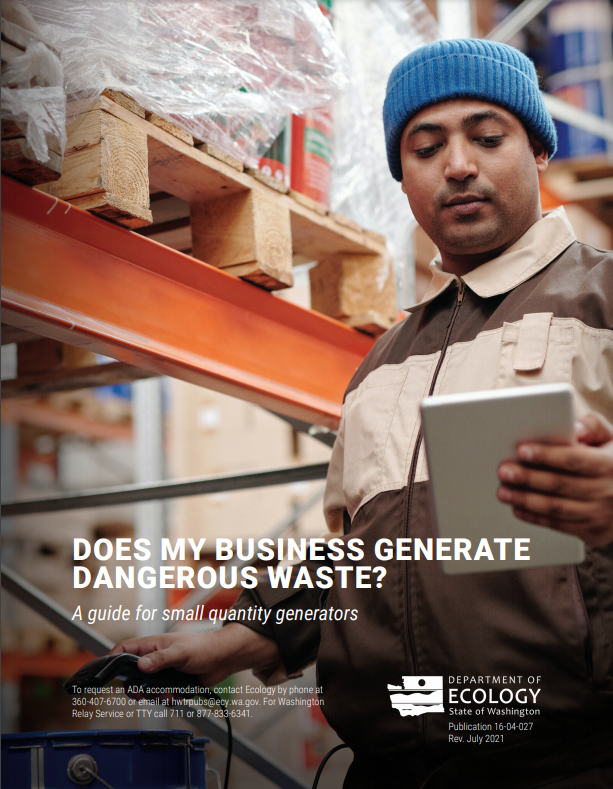Small quantity generators (SQGs)
Read the guide for SQGs.
While all dangerous waste generators must follow the Dangerous Waste Regulations, the rules for SQGs are less complex than those of other generators, which is why being “small” can be a benefit.
Learn more about how to qualify as an SQG:
- Monthly dangerous waste counts.
- Accumulation limits.
- Disposal options.
SQGs can also get free, hands-on pollution prevention assistance to help them improve workplace safety, better understand the regulations, and other helpful advice.
Who qualifies to be an SQG?
Your generator category can change every month based on the amount of dangerous waste you generate. To meet the definition of an SQG, you must meet the following requirements:
- Monthly dangerous waste counts for SQGs (also known as quantity exclusion limits or QELs).
- Accumulation limits for SQGs (i.e., total amount of dangerous waste you may store on-site).
NOTE: If you exceed accumulation limits, your site becomes subject to LQG conditions for exemption until all dangerous waste is shipped off-site.
How do SQGs manage dangerous waste?
While there are fewer regulations for SQGs to follow, there are still requirements.
Watch Dangerous Waste Basics: A Guide for Small Quantity Generators video or request a free DVD.
- Designate your waste to determine if it’s dangerous waste and what type.
- Apply the proper waste codes (if any).
- Determine how to safely contain and store it.
- Determine your generator category:
- Count dangerous waste every month.
- Be prepared to show how you know you’re an SQG.
- Manage dangerous waste containers safely:
- Keep containers closed and never mix incompatibles.
- While not required for SQGs, labeling containers is a good practice.
How do SQGs recycle or dispose of waste?
SQGs may transport their own waste to a disposal or recycling facility or hire a waste service provider to transport and dispose of their waste. Most businesses choose to hire a waste service provider.
The SQG regulations include a full list of dangerous waste disposal options, however, the most common include:
- Permitted dangerous (hazardous) waste facility.
- Moderate risk waste (MRW) facility.
- Permitted industrial or solid waste facility.
- Large quantity generator under the same person.
Read our guidance for LQG consolidation of SQG dangerous waste for more information.
Frequently asked questions
Related links
Contact information
Need help?
Contact a dangerous waste inspector in your region


